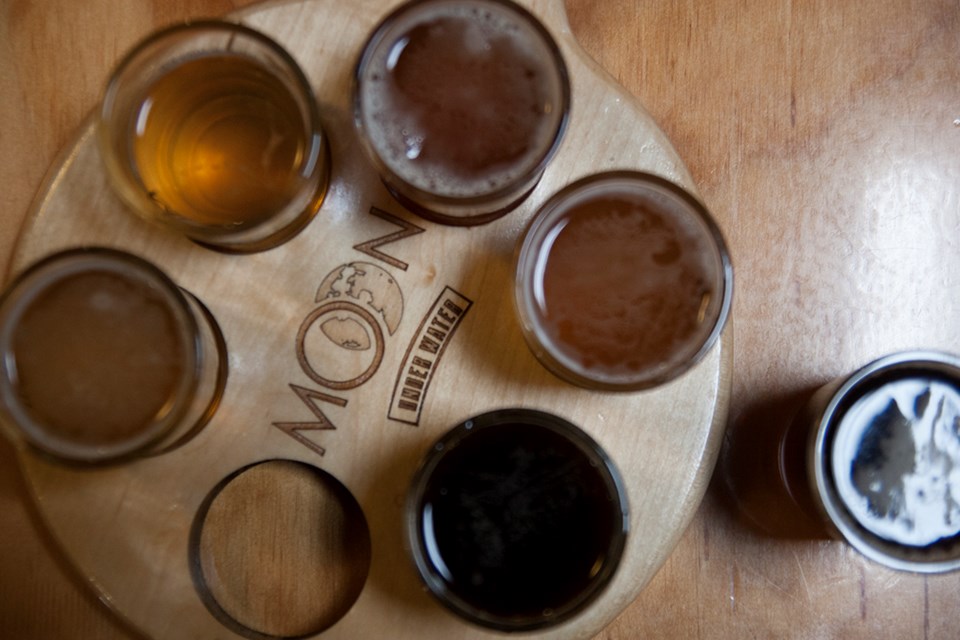It’s the city of newlyweds, nearly-deads and die-hard hopheads. Victoria has laid claim to BC’s craft beer throne ever since Spinnakers opened as Canada’s first brewpub with on-site brewing in 1984 and it’s given the city a cutting edge to slice through those musty stereotypes.
But a kind of malaise now seems to be creeping over its beer scene as well. At least, that’s the impression when compared to what’s happening on the other side of the Salish Sea, where breweries are sprouting like crazy across the Lower Mainland.
Fuelled by the BC government’s introduction of the brewery lounge endorsement in 2013, Vancouver and its suburbs all the way east to Abbotsford have seen upwards of 30 new openings. The City of Vancouver alone has doubled its number of breweries to two-dozen over the past three years. That’s twice the number currently operating in Greater Victoria, which, over the same period, saw just two breweries open.
What’s particularly conspicuous is that Greater Victoria doesn’t yet have a single brewery lounge, which has been such a principal cause of growth in breweries across the province.
So, has BC’s grand old dame had her fill of beer?
Well, the fact is that the provincial capital still aces Vancouver when it comes to number of breweries per capita: there’s roughly 1 per 9,800 people compared to Vancouver’s 1 per 26,000 (in Greater Victoria it’s around 1 per 29,000; in Metro Vancouver 1 per 48,100; all using 2011 census figures).
So Vancouver has actually been catching up over the past three years. If anything, the numbers suggest there’s still plenty of scope for more breweries in the Lower Mainland.
Conversely, there’s likely less appetite for start-ups in brewery-dense Victoria.
“I wouldn’t say we’re saturated, but there’s probably a little more hesitation to come into the market,” says Matt Phillips, owner of Phillips Brewing Company on Victoria’s Government Street.
Victoria’s more sustainable pace of growth since the mid-1980s has seen it become home to many of the province’s veteran craft breweries, several of whom – led by Phillips – have consequently become among BC’s biggest.
This partly explains why they don’t have lounges: Firstly, because the floor plans of the likes of Phillips, Driftwood Brewery, Lighthouse Brewing Co. and the recently sold Vancouver Island Brewery were drawn up well before the lounge concept was introduced; and secondly, having kept pace with demand by continuously expanding, these breweries have simply run out of space in which to set up a dedicated lounge.
“We’re all shoehorned into these spaces that made sense to us in terms of production under the regulatory model at the time,” Phillips says. “None of us took space we didn’t need and so, as a result, none of us have space to use.”
Yes, you can fill your growler at these breweries, but their tasting rooms are functional nooks that would be challenging and expensive to transform into cost-effective service areas. For Phillips to create a viable tasting lounge, “I’d have to move my brewhouse and a bunch of fermenters,” says Phillips. “It’s pretty daunting. I guess it’s whether we make beer or seats for people to drink it.”
There’s also not as much of a financial incentive for the bigger craft players to open a lounge, says Victoria brewing legend Sean Hoyne, who opened Hoyne Brewing Co. in 2011. Lounges are hugely beneficial for smaller breweries as it gives them a vital revenue stream, but the benefit fades as the operation gets larger, Hoyne believes.
“If we were to throw in a tap room it might be a nice thing to do, but it’s not going to change our overall financial picture because the main thrust of our business is relatively larger production,” he says.
Bear in mind, too, that Victoria has a considerable ratio of brewpubs compared to production breweries. The central locations of veterans Spinnakers, Swans and Canoe have undoubtedly been part of their success over the years – but the fact they’ve recently been joined by brewpubs in outlying areas (Rock Bay’s Moon Under Water in 2011, View Royal’s Four Mile in 2014 and Langford’s Axe & Barrel in April) indicates that there’s something more appealing about the brewpub model in Victoria. It’s only natural, considering Victoria’s British roots and penchant for cozy neighbourhood pubs.
Vancouver and its suburbs, on the other hand, have lacked the same concentration of these kinds of establishments, says Evans. Brewery tasting lounges are now arguably filling this niche with their casual atmosphere and welcoming community feel. Again, it can be argued that Vancouver is playing catch-up – and that there’s simply less need for brewery lounges in pub-rich Victoria.
But let’s take a step back. Instead of aiming to replicate Vancouver’s brewery model in Victoria, perhaps we should just celebrate the difference between the cities’ respective beer scenes: Vancouver’s vibrant, modern brewery lounges and Victoria’s cosier, more traditional brewpubs and neighbourhood pubs. Variety is a cornerstone of craft beer, after all.
In any case, the tasting room, brewery lounge and brewpub are just slightly different points on the same spectrum, according to Phillips. “I always argue that we have tasting rooms, they’re just called brewpubs here,” he says.
And if none of those options satisfy your thirst in Victoria, just head to your local.



